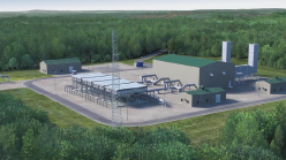Cased pipe segments are generally believed to be very safe; however, external corrosion compromising the integrity of the cased pipes does exist. The primary types of external corrosion include atmospheric corrosion and corrosion by electrolyte. The external corrosion by electrolyte occurs when cathodic protection (CP) is shielded, for instance, by the casing wall, by the insulator spacers, or by accumulation of mud/deposits in the casing-carrier pipe annulus. When a metallic short is present, any CP benefit could be completely eliminated.
When external corrosion on a pipe occurs, it is incumbent on operators applying the External Corrosion Direct Assessment (ECDA) procedure to understand the severity of the corrosion, if present, and to provide guidance into how operators should respond. A key step towards developing an ECDA procedure for cased pipe segments is understanding the statistical relationships between the corrosion anomalies identified using In-Line Inspection (ILI), which can determine the size and location of the corrosion anomalies within casings, and operational conditions of the pipeline. The results of the statistical relationships obtained from piggable cased pipe segments can be applied toward developing a strategy for non-piggable cased pipe segments, assuming corrosion conditions are similar.
This study addresses the significance of corrosion damage, for which a statistical analysis of ILI data of cased pipe segments from seven pipeline operators was performed. The evaluation also included investigating the effects of metallic and electrolytic shorts on the corrosion of cased pipe segments, summarizing results from a review of failure incidents of cased pipe segments during the past 22 years, and performing an assessment of the preferential location of a peak anomaly on a cased pipe segment.





